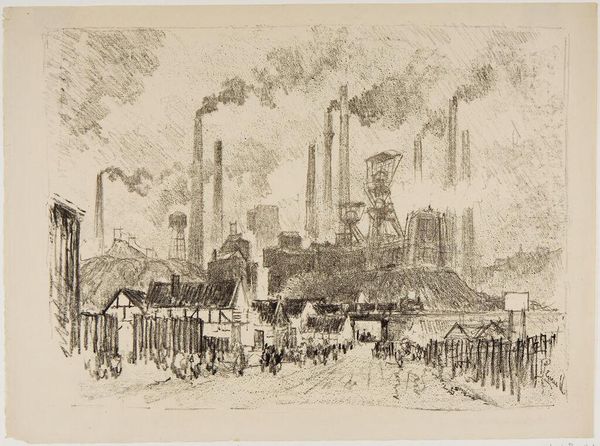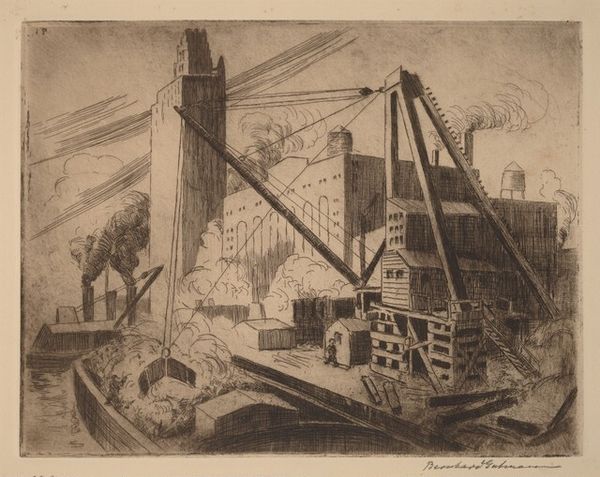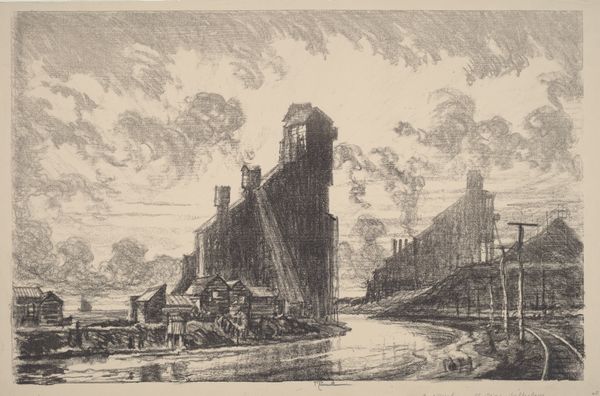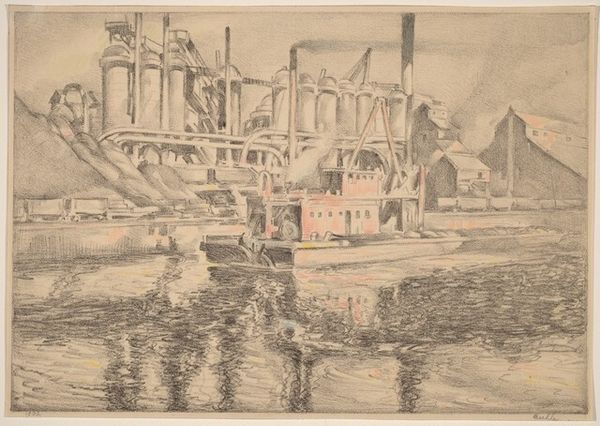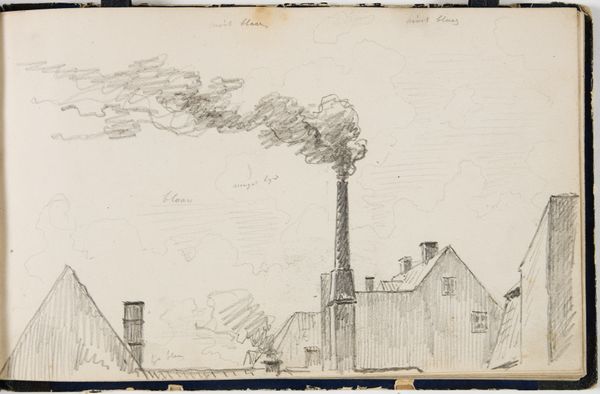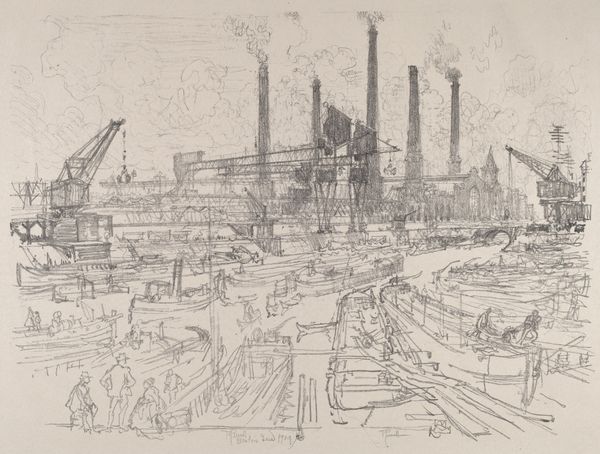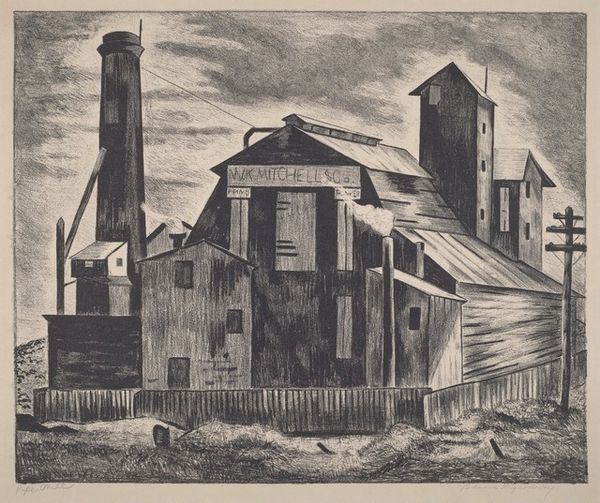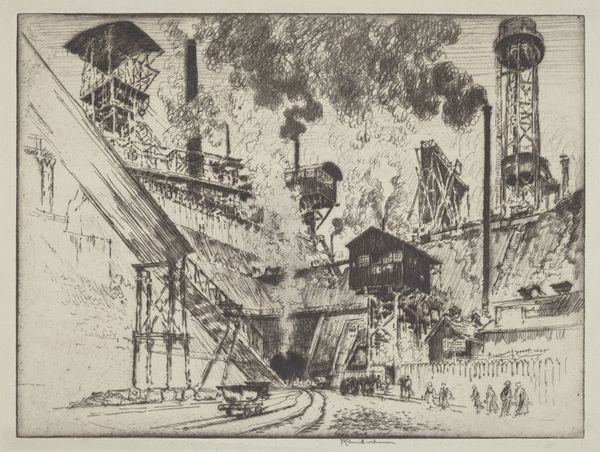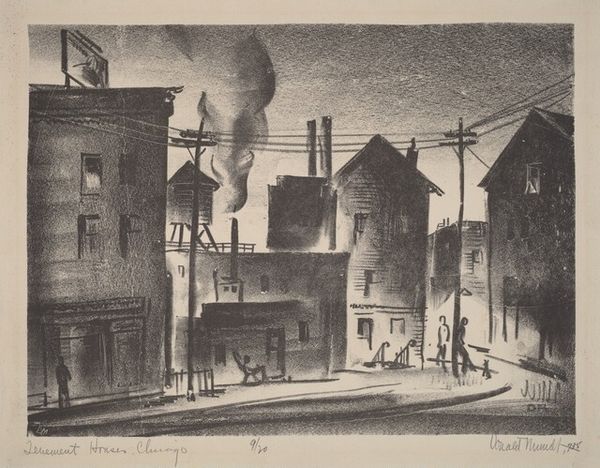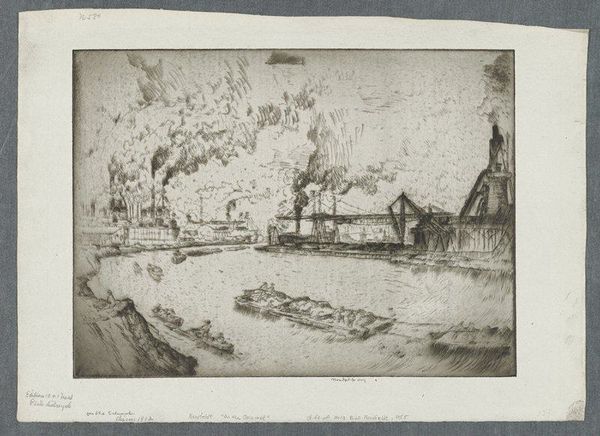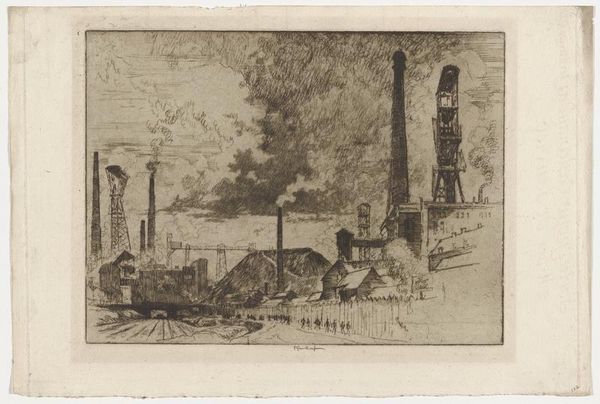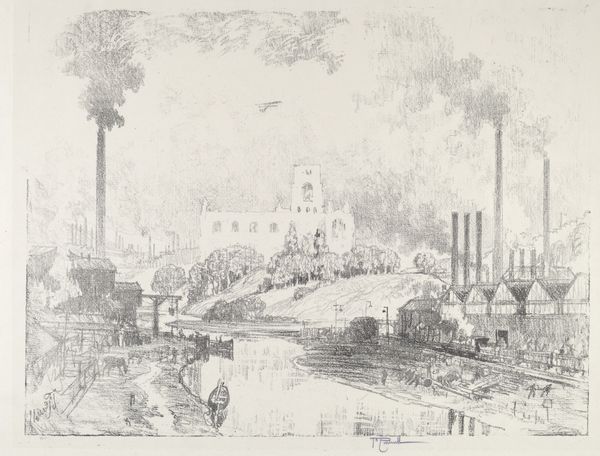
graphic-art, print, etching
#
graphic-art
# print
#
etching
#
landscape
#
realism
Dimensions: 9 15/16 x 12 3/8 in. (25.24 x 31.43 cm) (plate)10 13/16 x 15 3/16 in. (27.46 x 38.58 cm) (sheet)
Copyright: No Copyright - United States
Curator: This print is titled "Big Elevator," crafted in 1912 by Bror Julius Olsson Nordfeldt. It is an etching, showcasing his engagement with industrial subjects. Editor: It immediately evokes a feeling of industrial weight and inescapable grayness, despite being a relatively small print. The artist's focus clearly directs us to the vertical thrust of the elevator against a sky thick with the haze of smoke. Curator: Exactly. The etching technique – that meticulous cross-hatching and varied line weight – builds both atmosphere and volume. Think about the semiotics here; vertical lines dominate, connoting power and the ceaseless reach of industrial progress. Nordfeldt deploys subtle shading, allowing formal balance against industrial growth and a sense of inevitable mechanization. Editor: The historical context really amplifies that for me. In the early 20th century, cities were changing radically with the rise of heavy industry and factories which became dominant cultural forces in a landscape once dedicated to nature. How do you see this reflecting broader societal anxieties, of urbanization and alienation for example? Curator: Anxieties perhaps understated, I read the artist's position as more structural. In his visual articulation of this industrial edifice, one can discern how effectively the forms, contrasts, and careful layering come to stand for a wider world caught between progress and obsolescence. What do the clouds of smoke signify, if not transition and power itself. Editor: Perhaps that very contrast--of powerful machinery shrouded in choking smoke and its cultural effects. The "Big Elevator," which from a cultural position symbolizes the grain elevators which once lined midwestern landscape; at a time of expansion in places like Minneapolis—an industry dependent society changing rapidly, to become global markets and urbanization and technological progression? Curator: I appreciate your framing the subject that way, considering societal narratives and economic evolution around 1912 is fascinating. What stands clear for me is the articulation of formal elements. Even in the absence of explicit figures, Nordfeldt orchestrates line and form to suggest a profound change happening from within. Editor: Indeed. The social impact remains the silent element driving this whole artistic discourse! The way it documents a transformation to which all individuals and societies were subjugated. It provides critical awareness to these structures! Curator: A structural critique, elegantly rendered. I must add a good discussion from your cultural position!
Comments
No comments
Be the first to comment and join the conversation on the ultimate creative platform.
